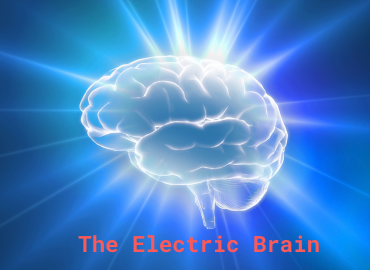The Electric Brain
Our brains are the communication center for our whole body. The brain uses a combination of electrical signals and chemical signals to talk to our tissues and organs. Outside our bodies, we use electricity to power our lights, heat, and hundreds of devices that we use every day. Today, we want to look at how electricity functions in the human brain, letting us move, think, and feel.
The material elements we have in our bodies, such as calcium, sodium, magnesium, and potassium, all carry electric charges. Resting cells are negatively charged inside the protective cell membranes, while the outsides of the cells are positively charged. Cells maintain this charge separation by allowing charged particles to cross the cell membrane. This transmission generates electric currents.
Brain cells are called neurons. They use a combination of electrical and chemical signals to communicate with each other. To do this, they generate electrical impulses by using charged particles called ions. These cross the cell membranes to communicate the messages. This is called the action potential. Then, the electrical signals are transmitted to other neurons using chemical signals called neurotransmitters, shot through a small gap between neurons called a synapse.
A disruption in these electrical currents can lead to health problems. For instance, electrical currents between cells produce the contractions necessary for the heart to beat. These can be observed using an electrocardiogram (ECG). Irregular currents can keep heart muscles from pumping correctly, which can lead to a heart attack.
Here’s a more detailed explanation of how the brain uses electricity. The action potential is an electrical signal that travels along an axon, a thin fiber that connects neurons. These work alongside neurotransmitters, chemical signals that pass information across synapses. These signals work together to make communication possible between brain cells and the rest of the body’s nervous system.
When neurons are in their resting state, the neurons have a resting membrane potential, which is the negative electrical charge inside the cell compared to outside the cell. These ions, especially sodium and potassium, create an imbalance. Ion pumps move sodium and potassium across the cell membrane.
When the cell feels a stimulus, sodium channels in the cell membrane open, allowing sodium ions to enter the cell. This introduction of positive charges depolarizes the membrane. Once this reaches a certain threshold, it triggers an action potential. This opens potassium channels,
allowing charged potassium ions to leave the cell, which repolarizes the membrane and reestablishes the negative charge. This process is lightning quick and takes the message down
the neuron’s axon.
When the action potential reaches the end of the axon, neurotransmitters are released across the synapse. Neurotransmitters cross the synapse and bind themselves to receptors on the next brain cell. This changes the charge of the affected neuron. Some neurotransmitters and their functions are:
− Norepinephrine, or noradrenaline, plays a role in our fight-or-flight response, increasing alertness and preparing the body to respond to stimulus
− Adenosine functions in an inhibitory role, promoting sleep, improving blood circulation, and creating relaxation.
− Serotonin helps us regulate mood development in response to stimulus, as well as steadying digestion and improving sleep.
− GABA, or gamma-aminobutyric acid, is another inhibitory neurotransmitter that acts by blocking signals from the central nervous system, helping to reduce anxiety and prevent
overstimulation.
This relates to one of the services we offer, transcranial magnetic stimulation (TMS). TMS is a noninvasive outpatient procedure where electromagnetic pulses are applied to the scalp. We position the applicator over the areas of the brain that most influence mood and mood regulation. This boosts cell activity and the movement of neurotransmitters. For more information on TMS, check out this page.
For help making an appointment, contact us via our website or call (585) 442-6960.




